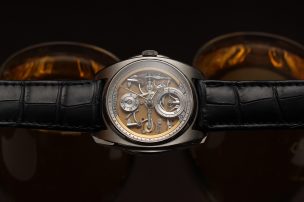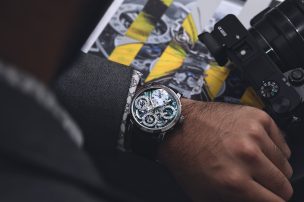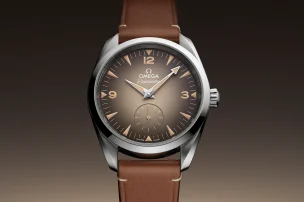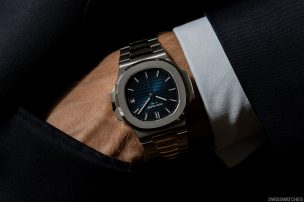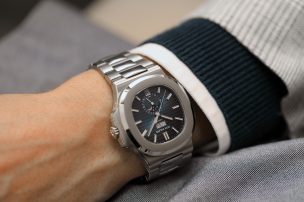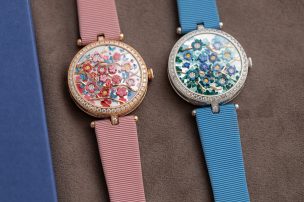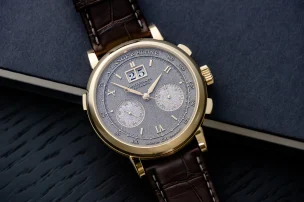
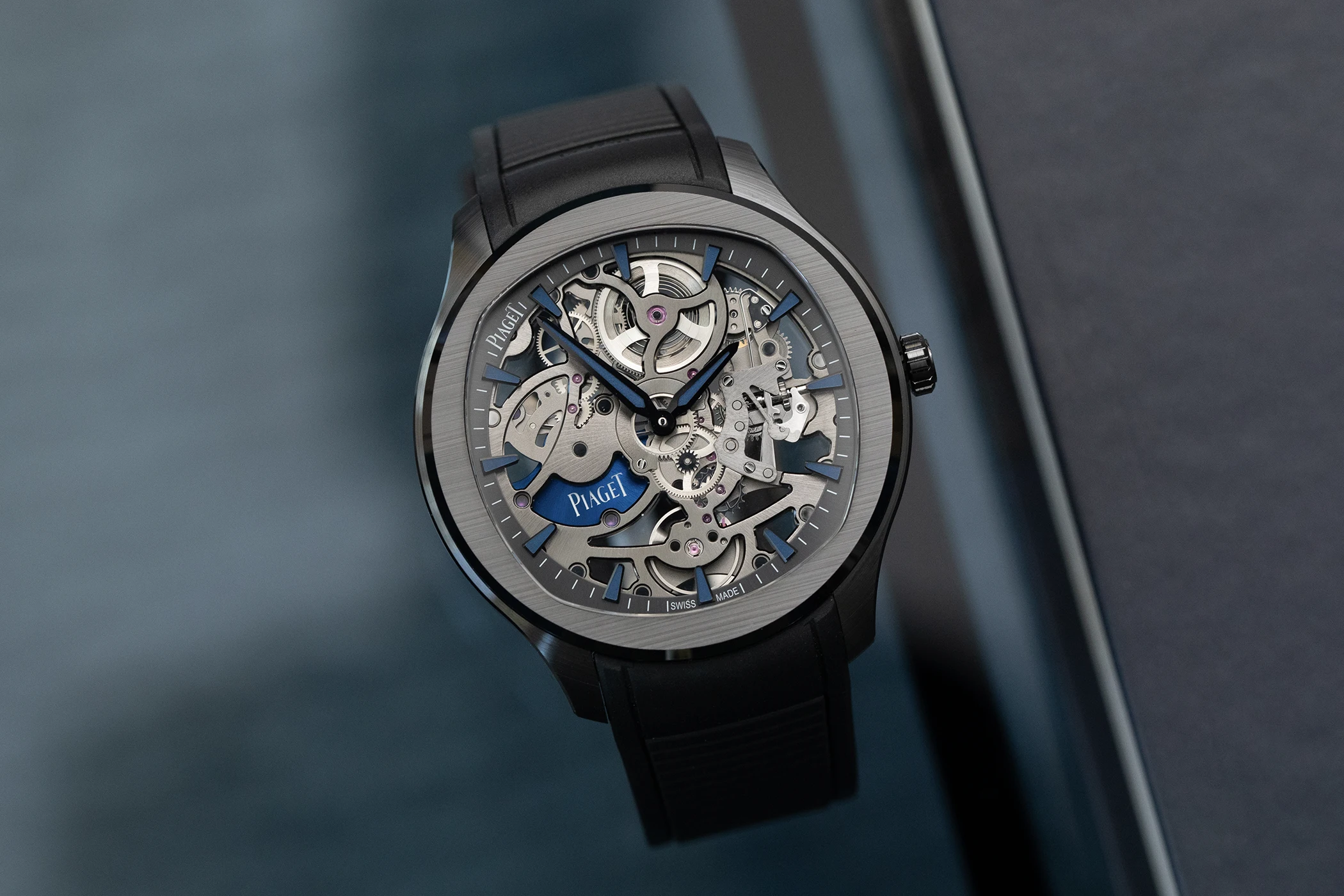
Piaget Polo Skeleton Ceramic: A New Milestone For a Brand Defined by its Materials
If there’s one thing Piaget is known for, it’s gold. One of the only horology houses to cast its own gold, Piaget’s work with the material has long been recognised in the industry, from its so-called ‘coin watches’ of the 1940s to its first ground-breaking gold Polo watches. Only in 2016 were the sporty steel Polo S iterations of today introduced, some years after Piaget finally joined the steel watch revolution with its Upstream collection produced in the early noughties. Now, with the introduction of the new Piaget Polo Skeleton Ceramic, Piaget’s Polo is jumping aboard to join another trendy material rather more quickly. So how might the addition of black ceramic fit into a historic watch manufacture that prides itself upon its meticulous use of precious metals? Let’s find out.
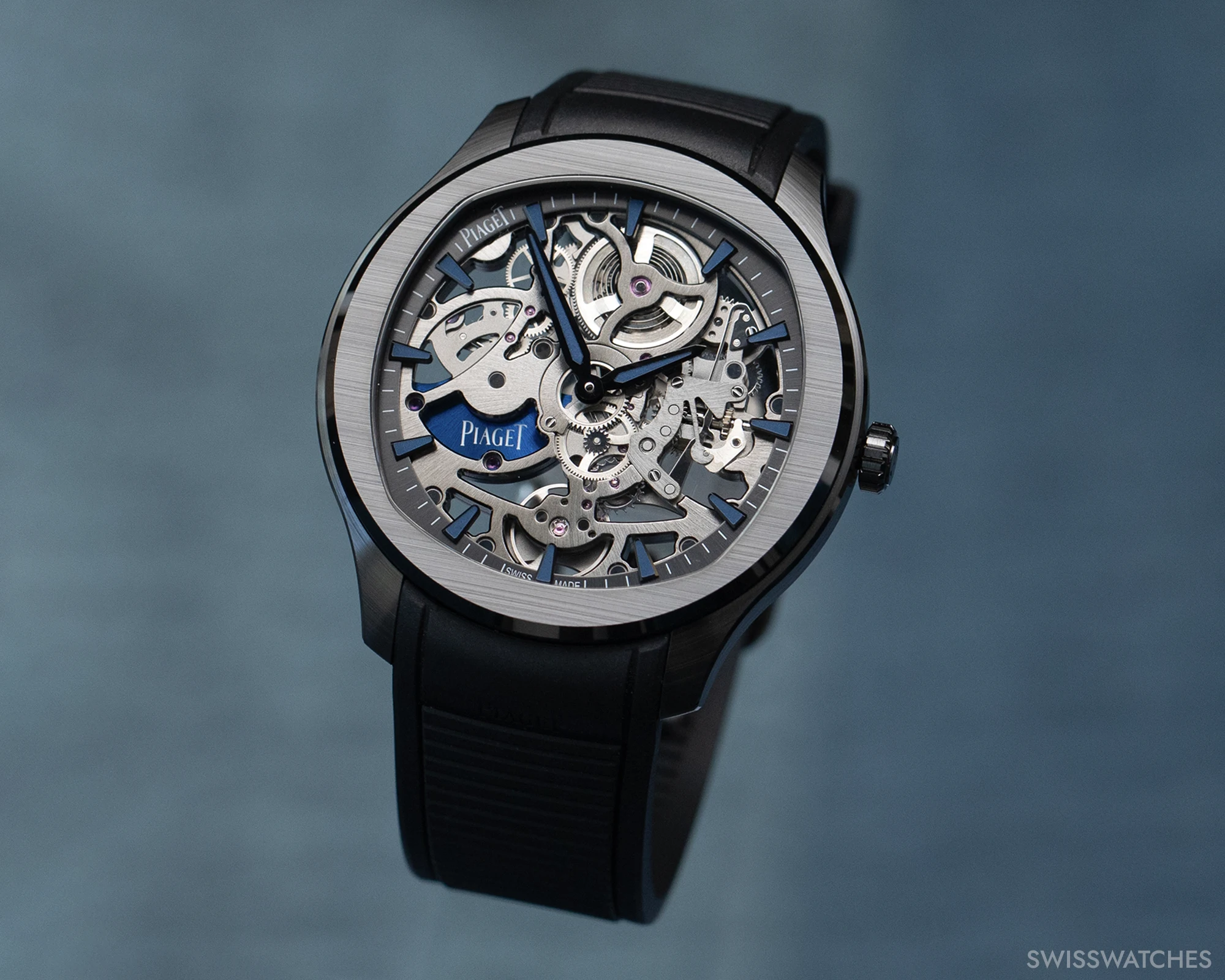
First things first: The appeal of ceramic
Cast your eyes back as far as 2017 and there are already articles with dark predictions of the black ceramic trend coming to an end. Yet, if anything, the material has only gone from strength to strength, with certain models from AP’s Royal Oak, IWC pilot’s watches, or Tudor’s Black Bay leading the charge. But why the popularity – and should this contemporary material even be introduced onto icons? Before we look any further, let’s unpack why ceramic is such a favoured choice for watchmakers, whether contemporary or traditional in their designs.
One material, numerous benefits
Ceramic has become a popular material in the watch industry for several reasons, and its usage in timepieces goes beyond what one might expect from traditional ceramics found in everyday items like pottery or tiles. The ceramic used in watches is a high-tech material engineered to offer a range of desirable qualities that significantly enhance the durability, aesthetics, and overall performance of a watch.
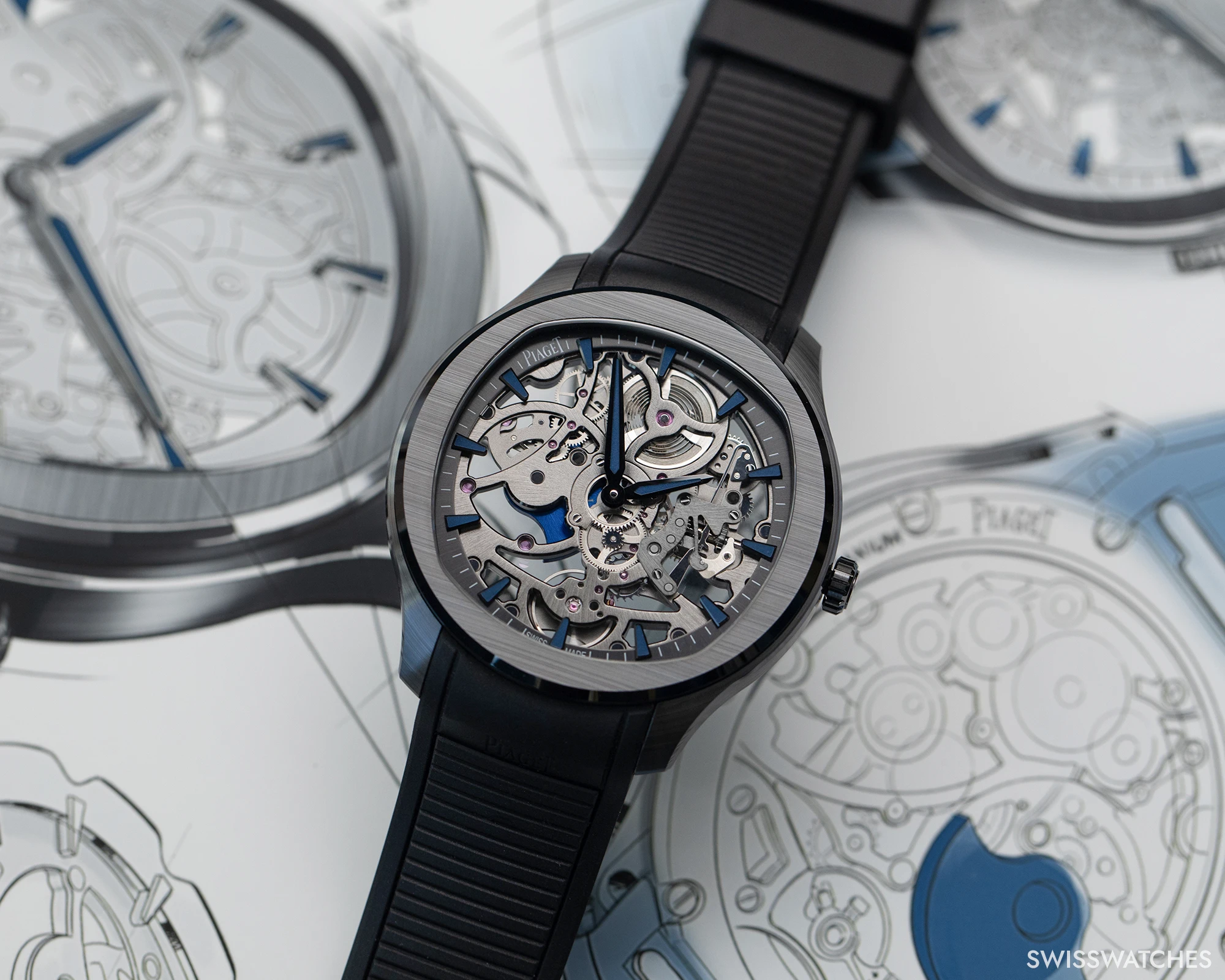
Durability and scratch resistance
One of the primary reasons watch brands use ceramic is its exceptional durability and scratch resistance. Unlike metals that can easily scratch or wear over time, ceramic remains largely unscathed by everyday use. This high-tech ceramic is often made from zirconium oxide or other advanced materials that are sintered (heated) at extremely high temperatures. This process results in a material that is incredibly hard – second only to diamonds in some cases. For luxury watch brands creating products destined to endure throughout the centuries, such as Piaget, this means the watch can maintain its pristine look for many years to come.
Lightweight comfort
Ceramic watches are also prized for being lightweight. Despite their robustness, ceramics used in watchmaking are significantly lighter than metals like steel or gold. This makes ceramic watches more comfortable for daily wear, particularly for those who prefer larger watches – this new Polo measures a classic 42 mm in diameter – that could otherwise feel heavy on the wrist.
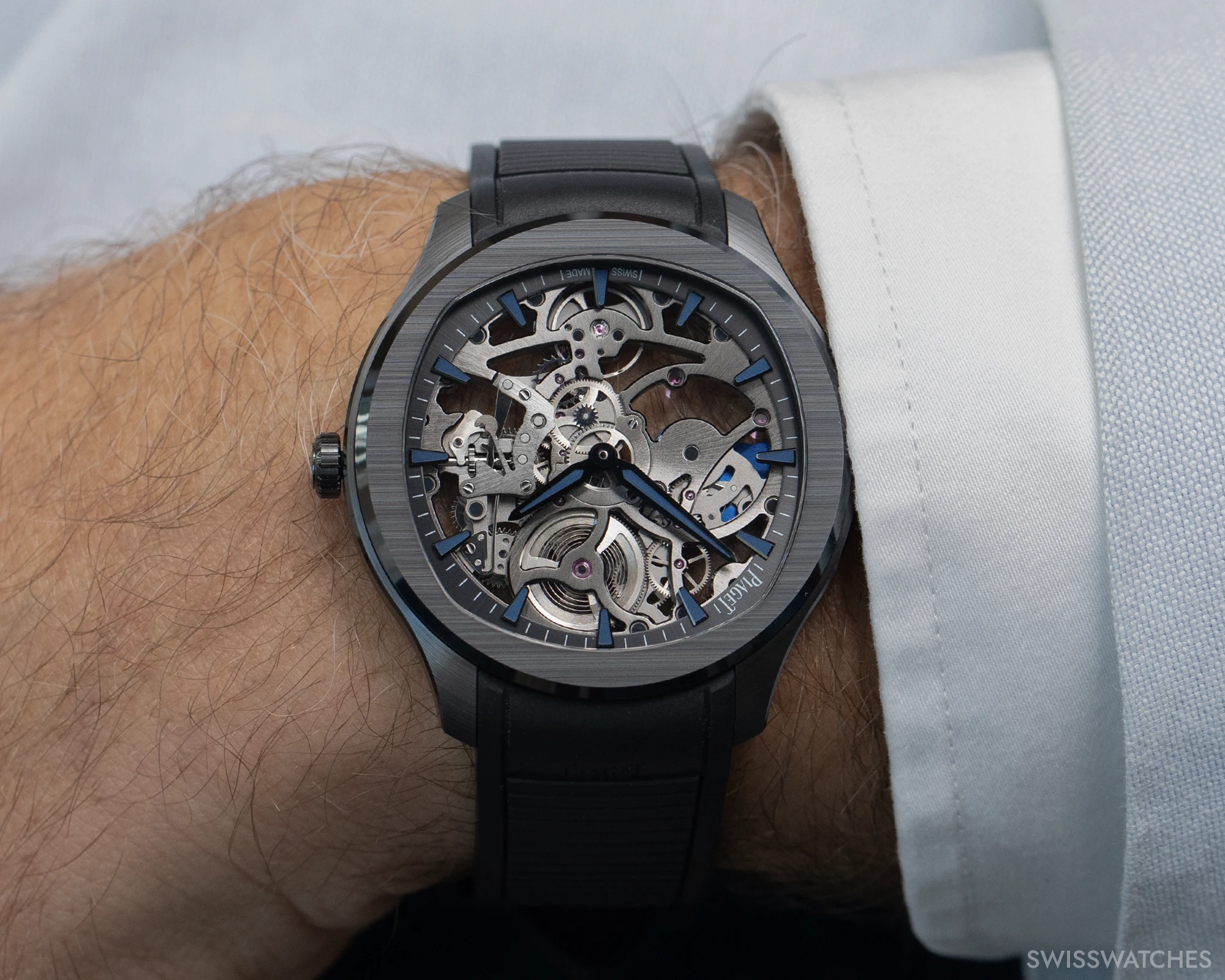
Aesthetic versatility
The aesthetic appeal of ceramic – we’ll look more specifically at black ceramic later – is another factor driving its use in watchmaking. Indeed, ceramic can be produced in a variety of colours and finishes, from glossy to matte, and even with a metallic sheen. This allows brands – think Rado and its vastly differentiating ceramic models – to create visually striking timepieces that stand out within an ever-competitive market. Furthermore, as mentioned, ceramic doesn’t fade or discolour over time, meaning the watch retains its original appearance far longer than others made with more traditional materials.
Hypoallergenic properties
For the handful of us with sensitive skin, ceramic watches can offer up an additional benefit: they are hypoallergenic. Unlike some metals that can cause allergic reactions or skin irritations, high-tech ceramic is biocompatible, meaning it’s unlikely to provoke any adverse reactions.
Resistance to environmental factors
Another advantage of ceramic is its resistance to environmental factors. Ceramic is impervious to UV rays, which means it won’t degrade or discolour when exposed to sunlight. It’s also resistant to corrosion and can withstand extreme temperatures, making it an ideal material for watches designed to be worn in harsh conditions or during outdoor activities.
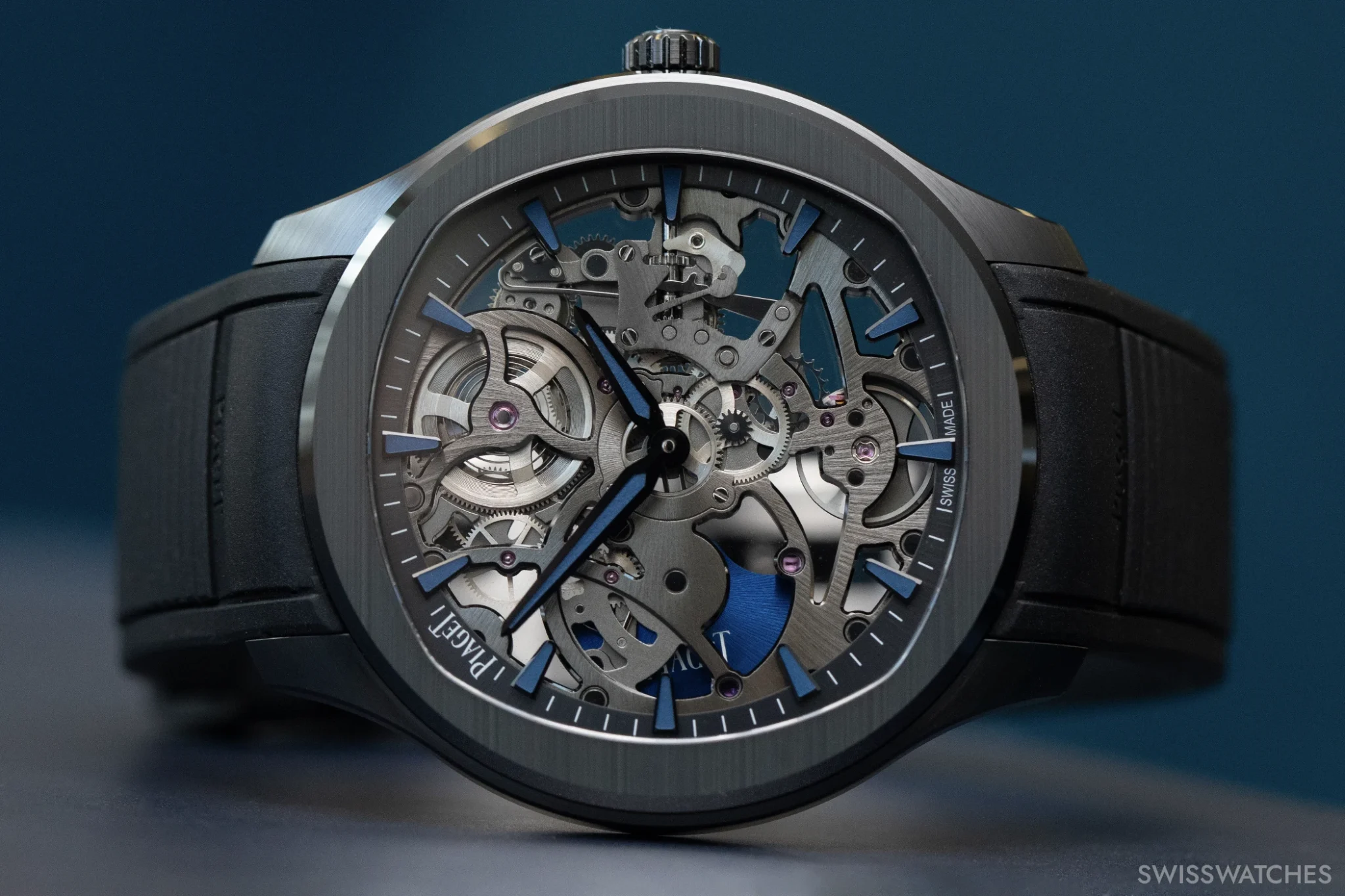
How does the ceramic used in watches differ from ‘normal’ ceramic?
It’s a question often asked, and the answer is that the differences between the high-tech ceramic used in watches and traditional ceramics, say for a vase, are substantial. Traditional ceramics are brittle and prone to cracking or shattering upon impact. By contrast, the ceramic used in watches is engineered for toughness, making it much less likely to break if dropped or subjected to force. This enhanced toughness is due to the manufacturing processes and the materials used discussed earlier in this article, which are far more advanced than those used in everyday ceramics.
Why are black ceramic watches so popular?
With all of this in mind, it’s no wonder that the material has become a coveted choice within the watch industry. But, above all other colours, why is black such a favourite? Firstly, one simple answer could be that black ceramic offers the unique combination of aesthetic appeal with functional benefits, allowing the watch merge with many an occasion and accordingly, many an outfit. Yet the appeal of black ceramic in luxury watches also lies in its sleek, contemporary look. When combined with the smooth, lustrous finish of ceramic, black creates a strikingly modern aesthetic that resonates with a pretty broad market, from watch enthusiasts to fasionistas. Furthermore, the deep, consistent hue of black is not just painted or coated but is intrinsic to the material, ensuring that it will not fade or wear away over time. This impressive enduring quality, alongside the fairly assured appeal of black as a colour, is essential in the luxury market, where, as mentioned, longevity and lasting beauty are highly prized. While primary colours – take the salmon or green dial trends – will go out of favour sooner or later, black is a fairly reliable option that doesn’t seem to have the same ability to become so overtly outdated.
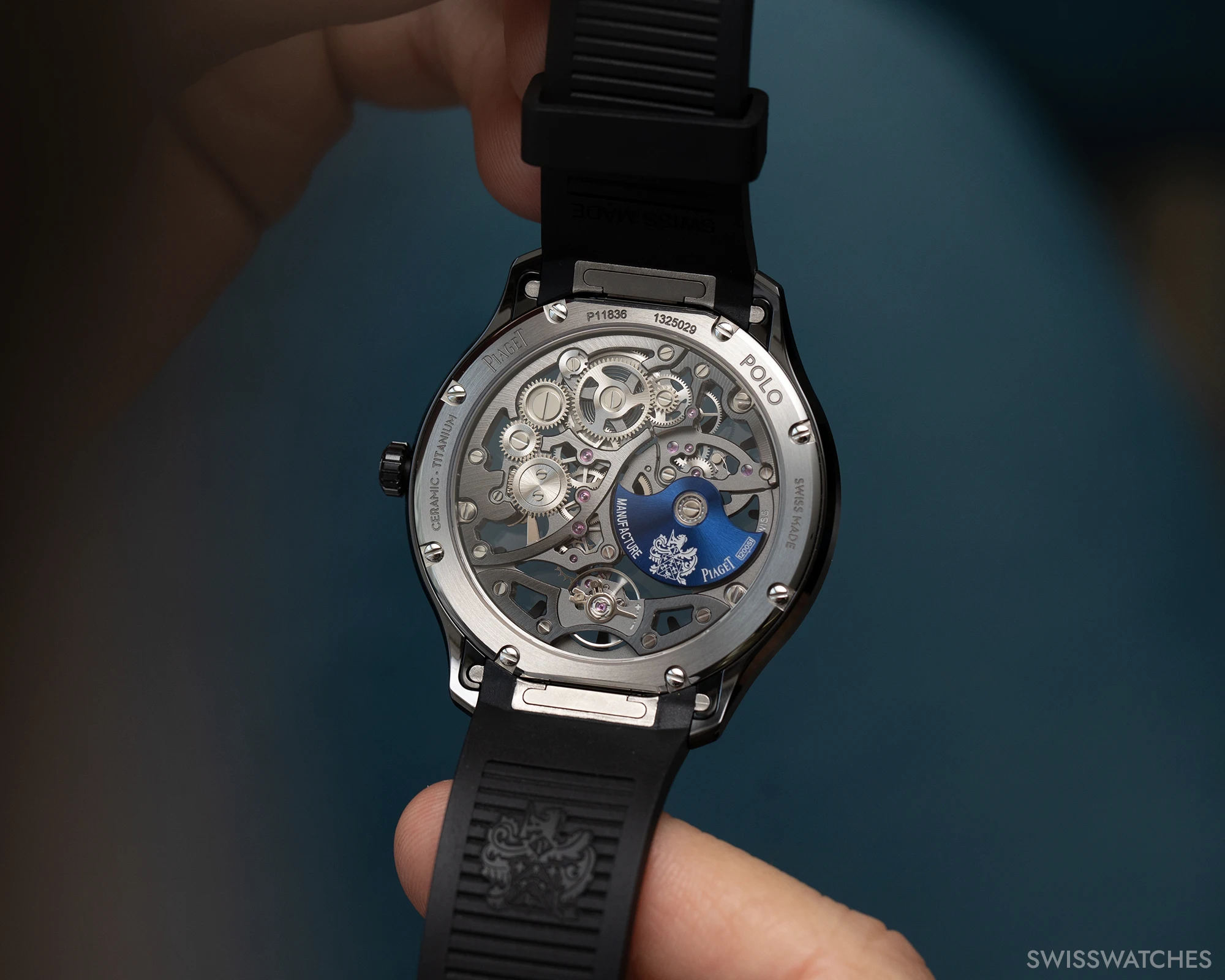
Which brands have used black ceramic?
The number of Swiss watch manufactures with black ceramic watches in their portfolio is, honestly, too long to list, especially when we want to get down to business and focus on the new Piaget Polo. Yet it is worth noting a few of the most pivotal players in the game. In 1986, IWC Schaffhausen made history with the introduction of the world’s first true ceramic watch case, which was, incidentally black. This was the Reference 3755 Da Vinci, featuring a cool black ceramic in combination with 18-carat yellow gold. That same year, trusty ‘Master of Materials’ Rado launched its Integral collection using high-tech ceramic. Meanwhile, Chanel’s J12 marked the launch of the first ‘full ceramic’ watch, bracelet included, and its all-black version, showcased when the line was relaunched, has been a popular choice since 2019. Or another milestone: Omega’s ceramic Seamasters and Dark Side of the Moon Speedmasters, with their ceramic dials, which opened up the discussion of just how much one should open up a watch icon to change – something we’ll circle back to once we’ve taken a good look at the new black ceramic Polo.
A new milestone: The Piaget Polo Skeleton Ceramic
The all-important case
The 42 mm jet-black case of the Piaget Polo Skeleton Ceramic represents three years of meticulous development. On the wrist, it makes for a very wearable option thanks to the material’s lightweight and durable properties in combination with a 7.5mm height. By the way: this ceramic edition is only 1mm thicker than the existing steel and gold models; an achievement for a skeleton watch with an automatic winding system.
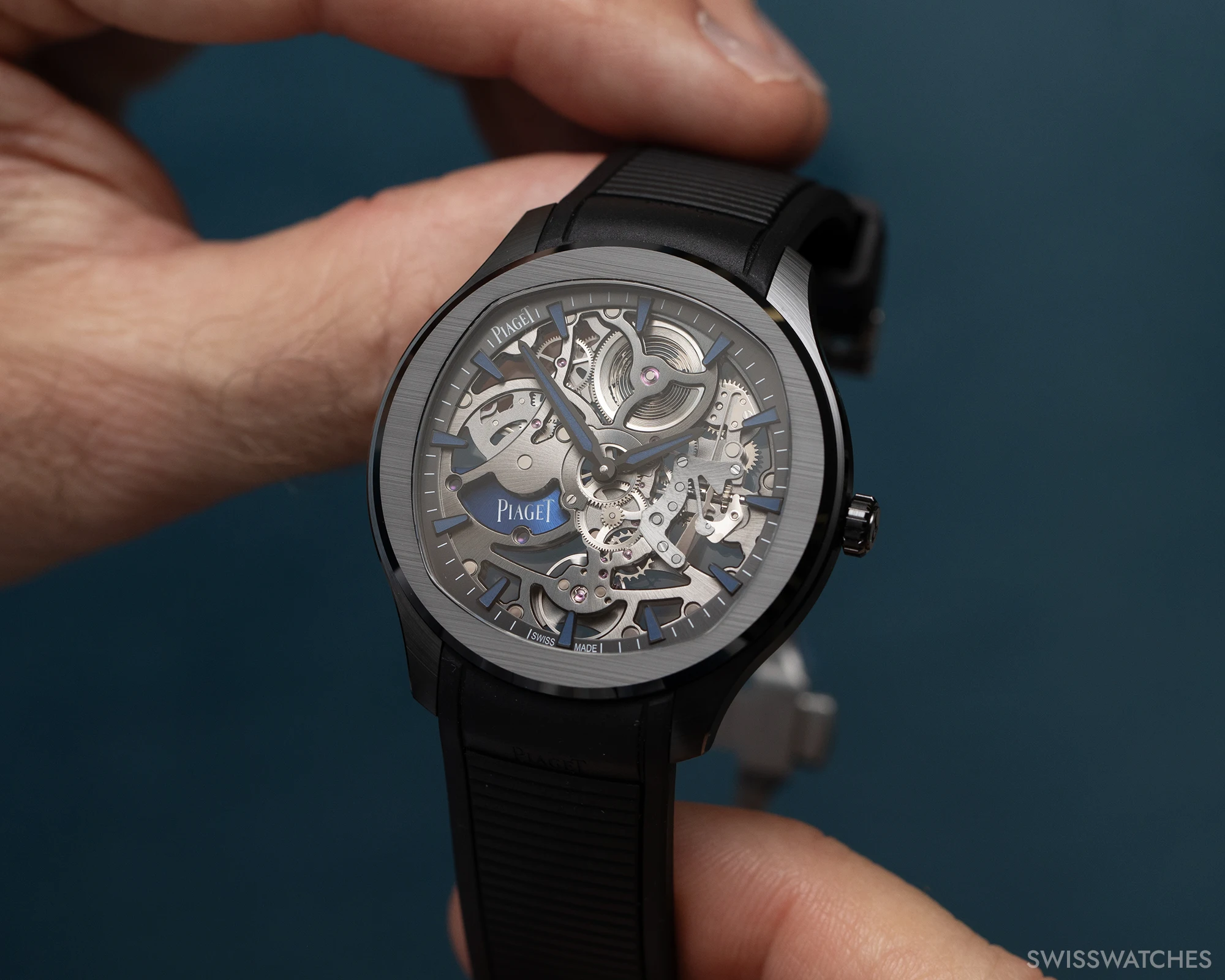
Anchoring the watch’s construction is a special titanium container dreamt up by Piaget’s engineers and treated with black DLC to match the dark profile of the ceramic components, not least the two-part case, crown, and bezel. This design ensures not only the robustness and water-resistent qualities of the watch (5 ATM), but also maintains the sleek and sophisticated look that Piaget is known for. The tone-on-tone aesthetic, with subtle grey shades, brings a contemporary touch.
A skeletonised dial: Allowing for a view of the inner workings
The dial of the Piaget Polo Skeleton Ceramic is a masterclass in openworked watch design, inviting the wearer to explore the intricate art of skeletonisation – something Piaget has been perfecting since 1948. The jet-black aesthetic of the dial is contrasted by striking Superluminova accents on the indexes and hands, allowing for legibility around the clock. For the first time, the Piaget logo on the oscillating weight is also highlighted with Superluminova, adding an innovative new element to the Polo’s design.
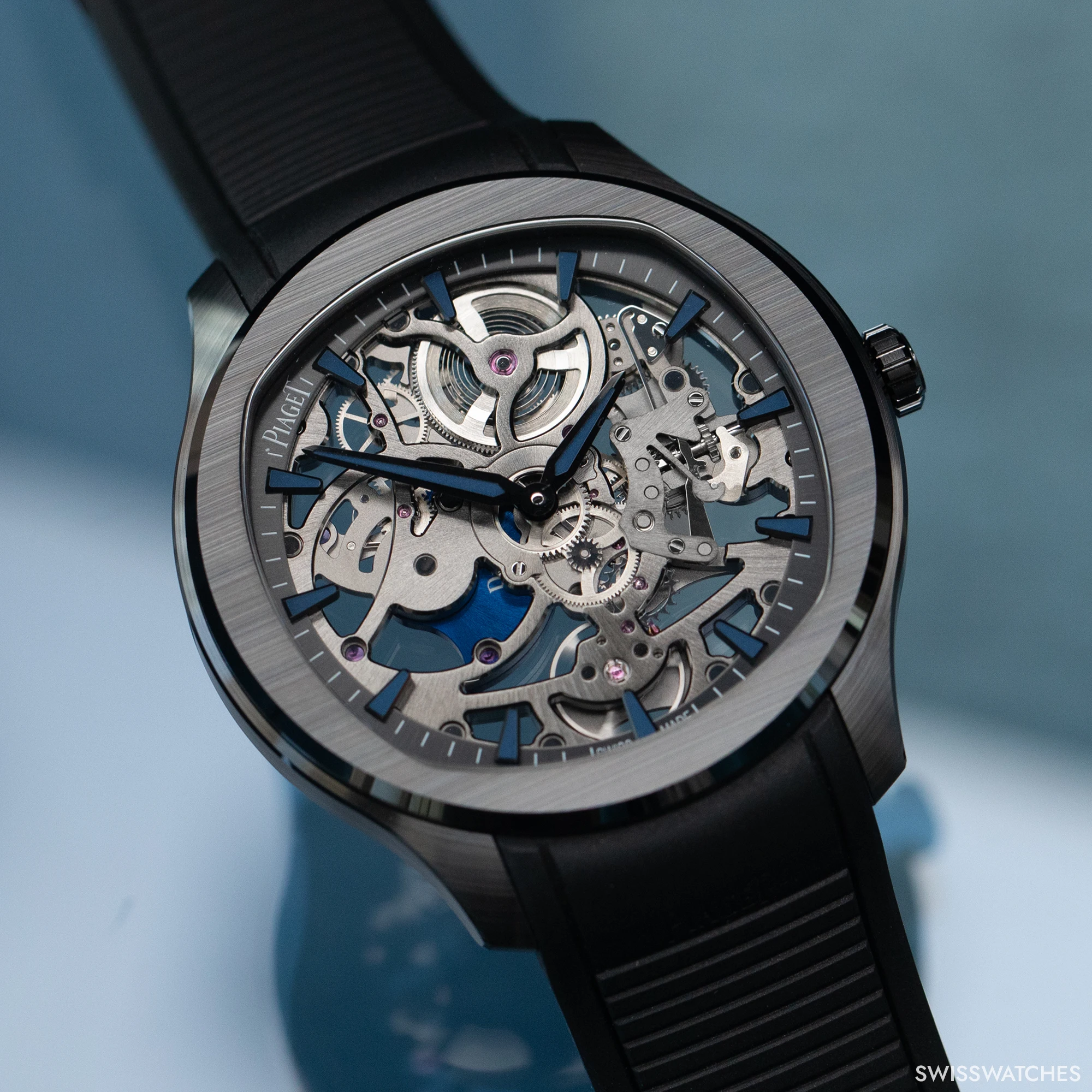
The calibre 1200S1: Exposing the beating heart of the watch
At the heart of the Piaget Polo Skeleton Ceramic lies the manufacture calibre 1200S1, the amended variety of Piaget’s 1200S ultra-thin self-winding calibre that measures a mere 2.4 mm in height. Despite the challenges of working with ceramic, the movement has been seamlessly integrated in-house to fit into the watch’s slim construction, ensuring both reliability and precision. This calibre not only powers the watch’s functions but also enhances its aesthetic appeal through the intricate skeleton design visible on the dial. It offers a 44-hour power reserve, while beating at a frequency of 3 Hz.
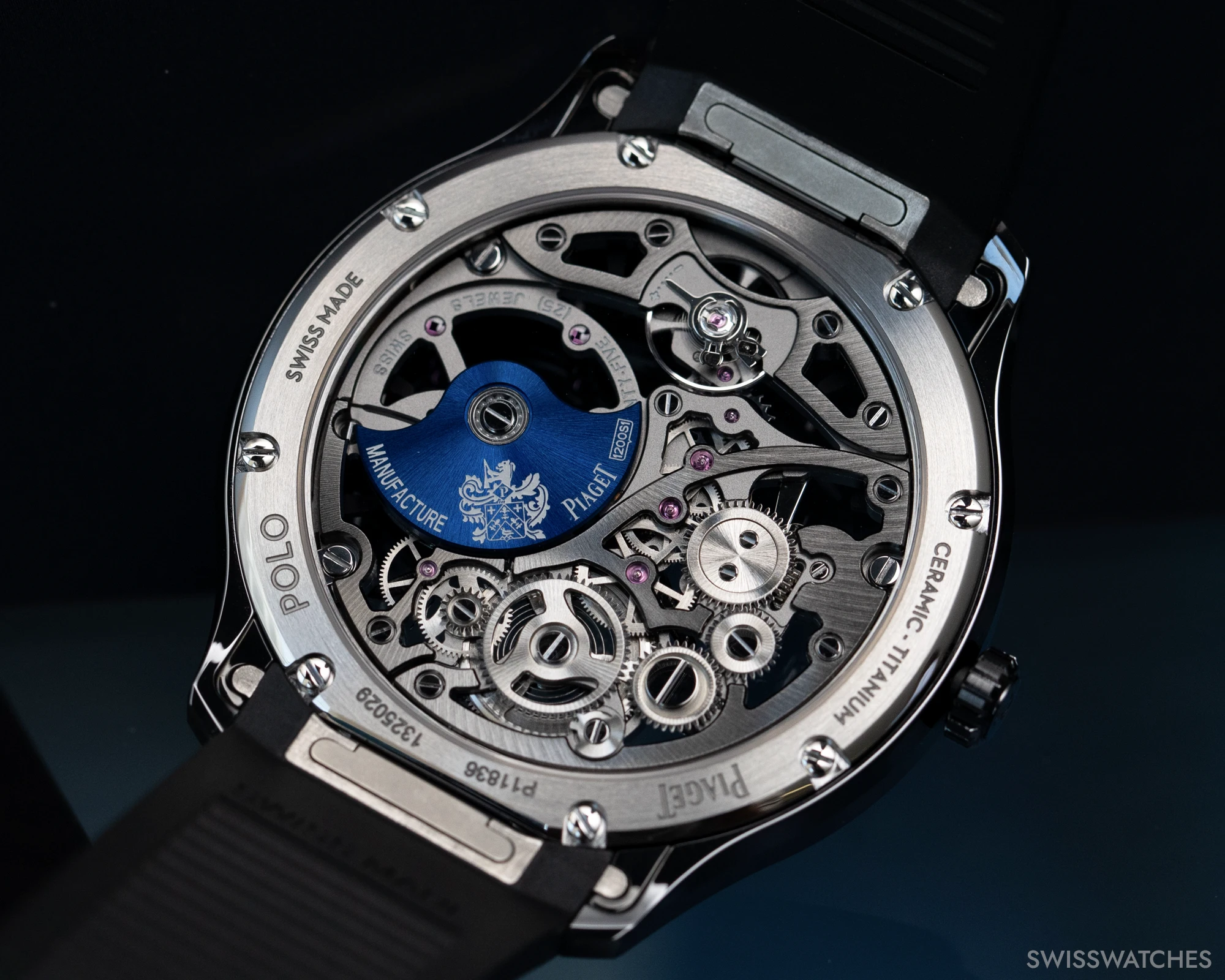
A versatile strap
Adding to the watch’s versatility achieved through its colour and material is the SingleTouch interchangeable strap system, first introduced on the Piaget Polo Perpetual Calendar Ultra-Thin in 2023. The Piaget Polo Skeleton Ceramic comes with a black rubber strap paired with a steel and titanium folding clasp, offering both comfort and durability. For those who cannot resist at least a splash of colour, an additional blue rubber strap is also available. The price of the watch is 44,100 euros.
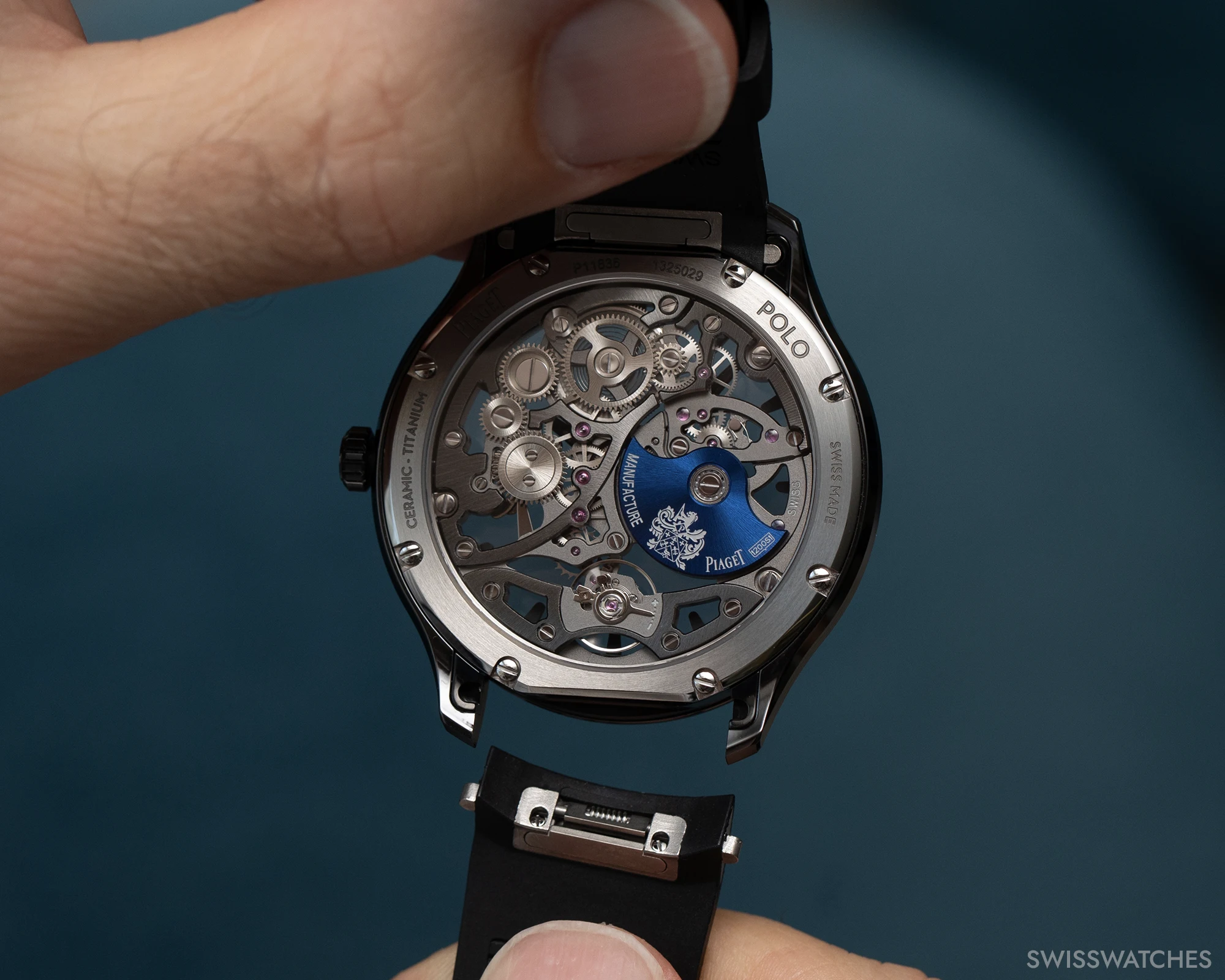
A new chapter for Piaget
This leaves us with a few questions still to be answered. Should icons such as the Polo be changed so fundamentally – and should the decision to do so be taken lightly?
For one thing, the Piaget Polo model is Piaget’s best-selling watch line, not to mention a historically significant model, having marked the introduction of Piaget’s first sports watch. Thus, there’s no doubt that the watch manufacture took this into account. When Yves Piaget first introduced the Polo watch model, he described the eponymous sport to which it is dedicated as ‘Athletic, demanding and precise’. Having taken a close look at the qualities of ceramic, it matches perfectly to the sport. For the nit-pickers pointing out that ceramic can crack if dropped, I’d equally nit-pickingly reply ‘No, not when it falls onto the soft grass of a polo pitch it won’t.’ Likewise, Omega might have argued their ceramic Speedmaster would have been just fine on the Moon, thank you very much – it would have simply floated. Hopefully this underlines the futility of such an argument. If we are brutally honest, anyway, many a watch icon originally designed for a life of action – prime example, the Rolex Submariner – has since transformed into a watch that we can indulge in wearing every day, whether in the office or drinking a well-cooled Pinot Grigio at the beach. The same line of thought goes for black ceramic: it might not be a material for everyone, but as with all good things, nor should it be.
One final thought: my colleague Joern F. Kengelbach’s wonderfully in-depth article on the revolution of the Piaget Polo makes thing clear: evolution is crucial if a classic watch model is to endure over the centuries. Aficionados will know just how much the Piaget Polo has changed since its conception – and this daring new ceramic edition is a testament to Piaget’s watchmaking savoir-faire and pioneering spirit.
